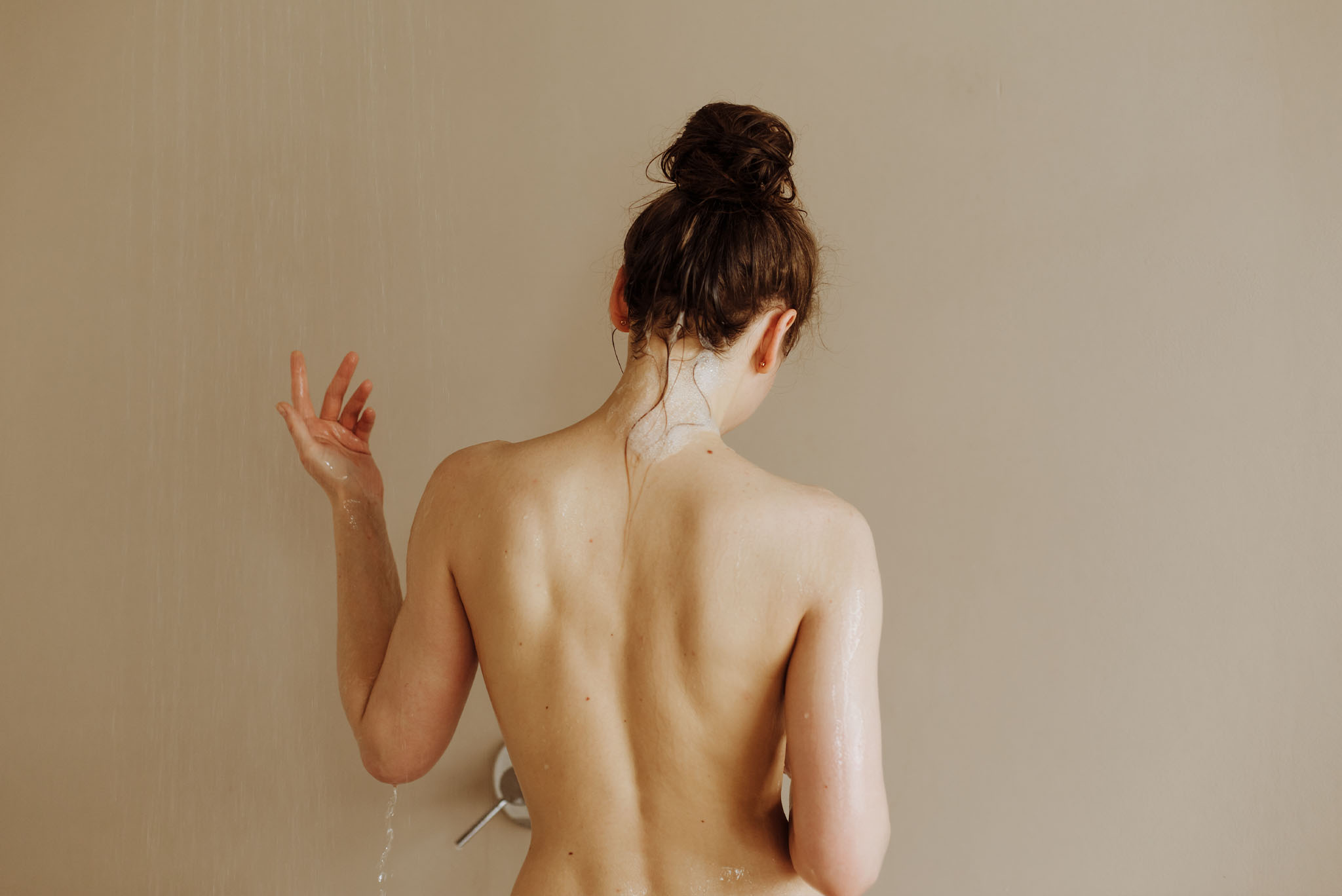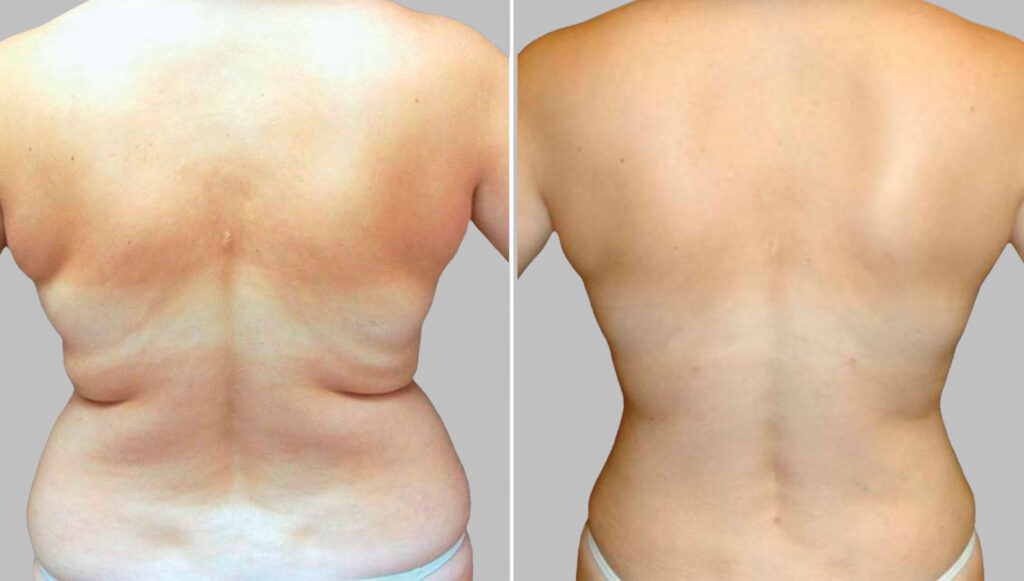
From dark acne scars to sagging skin, there are plenty of reasons for your back to be at the front of your mind. We asked experts to share their top options to rewind the clock for your back, from skin-deep to total transformation.
Skin Deep
An easy place to start with aesthetic rejuvenation is with your skin, and the back is no exception.
“Many people have clogged pores or texture issues on their back,” says Pittsburgh plastic surgeon Leo R. McCafferty, MD. “For these patients we like to start with a HydraFacial on the back, as it’s great for cleaning the pores and improving texture.”
More like a spa treatment than a procedure, the HydraFacial cleanses, exfoliates and infuses the skin with medical-grade serums that leaves kin with a visible glow.
“It’s a really nice experience,” Dr. McCafferty explains. “Many people are familiar with it for the face, but it also works well on the back to treat those texture and acne issues.”
Speaking of acne, let’s talk acne scars.
It’s no secret that the back can scar pretty badly. Plenty of us who survived the tortuous acne of our teen years are still haunted by the scars that just won’t fade. Even traditional methods for fighting hyperpigmentation that
work on other parts of the body can have a hard time tackling the back, and it turns out there’s a reason for that.
According to Fort Lauderdale, FL dermatologist Matthew J. Elias, MD, scars on the back can be particularly
bad because the back is so busy working. “The back is typically one of the worst healing spots on the body due to all the motion that takes place in our daily activities,” he says. “Walking, exercising, eating, and even typing on a computer or phone involves moving our arms, which in turn creates movement in the back. This can lead to pulling and tugging on scars.”
The good news is that there are many solid options to reduce or eliminate those scars.
“Vascular lasers like the Excel V or pulsed-dye laser are classic go-to options for red, stretched scars on
the back,” Dr. Elias explains. “And after improvement with the vascular component, a dermatologist can then use a resurfacing option like a CO2 laser to further refine and improve the scar. Lasers will take
multiple sessions, perhaps with multiple different types of lasers to yield results, But classically, they are
the best at providing nonsurgical improvement of scars, including those on the back.”

Up the Energy
Sometimes, we can be at our goal weight, but still struggle with areas of extra fat that just won’t go away. That little roll under the bra strap is notorious for its stubbornness, with excess skin known to stick around after traditional liposuction.
New York plastic surgeon Mokhtar Asaadi, MD explains that the main issue is the skin of the back itself. “Doing regular liposuction on the back is difficult because the skin and fat is very thick,” he says. “But, I have very good success with ultrasound-powered liposuction like VASER, which tightens that skin effectively.”
Though that tightening effect is fairly moderate and some of these “stacking technologies” are off-label, the impact can be significant. “When I measure the area, we can see roughly a 30-percent contraction in the skin, especially if the patient is younger,” Dr. Asaadi says. Without skin tightening, liposuction can create new challenges that are difficult to solve.
“If you remove fat without skin tightening, you’ll be able to see dimpling and irregularities,” explains Dr. Asaadi. “It’s very hard to correct. Normally if there’s that irregularity, we would do fat grafting, but the area of the back is so large that it’s almost impossible to do fat grafts to correct them.”
Louisville, KY plastic surgeon Chet Mays, MD adds, “Liposuction is great for sculpting and debulking areas of the body, but it doesn’t address the skin. Now, with some of the newer skin-tightening technologies, like Renuvion or BodyTite, I can get some tightening when added to the lipo.”
The Bra-Line Back Lift
However, there are cases where that moderate skin tightening isn’t enough to banish that pesky bra roll. If that’s the case, you might be candidate for a bra-line back lift. A procedure commonly used on patients who have lost significant weight, this surgical procedure removes excess fat and skin from the back and neatly hides the scar under your bra.
“For patients who have lost large amounts of weight, even with liposuction, the skin can remain and be cumbersome to patients when wearing tighter clothing,” Dr. Mays explains. “This is where the bra-line back lift comes in. Cutting the skin from the upper back and hiding the incision where the bra strap lays is very popular because it improves the contour with a hidden scar.”
It’s an excellent option for those who have reached their goal weight, but just can’t banish that one roll. “Sometimes with weight loss, the bulkiness goes away, but the skin remains,” Dr. Mays says. “The bra-line back lift is a great way to get rid of that skin.”
The Bra-Line Scar
While the horizontal scar beneath the bra line is hidden, there are also multiple avenues for scar revision to help minimize it. According to Dr. McCafferty, the protocol for poor scarring is extensive. “Scar placement is a big deal,” he explains. “You want to orient the scar so that there’s minimal tension, so that you can create a good scar. But, bad and thickened scars can still be treated. Depending on what they look like, we can use radio-frequency treatments, microneedling or cortisone injections. We can even do a surgical scar revision.”
That said, according to Dr. Asaadi, most patients are comfortable with the scar that results from a bra-line
back lift and recover quickly. “The recovery is a matter of days,” he explains. “When we do a bra-line lift, as opposed to abdominal surgery, we don’t have to do any undermining, so there is no need for a drain.”
Undermining is a surgical technique that cuts the fibrous tissue that connects the skin to the underlying fascia, and it usually requires a post- op drain to prevent complications like hematomas from forming. “We also use a long-lasting local anesthesia to keep the patient numb throughout the first day to reduce any pain,” adds Dr. Asaadi. “And you can wear your bra as early as the next day.”






